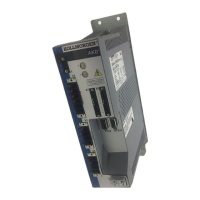7.3 PDO Configuration
PDOs are used for process data communication. There are two types of PDOs: Receive PDOs (RPDOs) and
transmit PDOs (TPDOs).
The content of the PDOs is pre-defined (see descriptions on pages=> p. 80 and => p. 83). If the data content is
not appropriate for a special application the data objects in the PDOs can be remapped freely.
One data entry in the PDOs looks like this:
MSB LSB
index (16 bit) Subindex (8 bit) data length in bits (8 bit)
The configuration procedure for a free mapping of a PDO looks like this (example for TPDO1):
1. Stop possible transmission of the PDO.
COB-ID Control
byte
Index Sub-
Low byte High byte index Data Comment
601 23 ´00 18 01h 81 01 00 C0 Switch-off COB-Id
2. Delete the actual mapping of the PDO by writing a 0 to the subindex 0 of the mapping Object.
COB-ID Control
byte
Index Sub-
Low byte High byte index Data Comment
601 2F ´00 1A 00h 00 00 00 00 Delete actual mapping
3. Build the mapping with object dictionary objects (see page => p. 119)) which are mappable, e.g.
COB-ID Control
byte
Index Sub-
Low byte High byte index Data Comment
601 23 00 1A 01h 10 00 41 60 1st entry:
CANopen statusword
with 16 bits
601 23 00 1A 02h 20 00 02 10 2nd entry:
Manufacturer status
with 32 bits
3. Write the number of mapped objects to subindex 0 of the mapping Object.
COB-ID Control
byte
Index Sub-
Low byte High byte index Data Comment
601 2F 00 1A 00h 02 00 00 00 Check for the right
number of entries
Mapping shall be done before the network management is switched to OPERATIONAL.
AKD CANopen | 7 CANopen Drive Profile
Kollmorgen™ | November 2012 79

